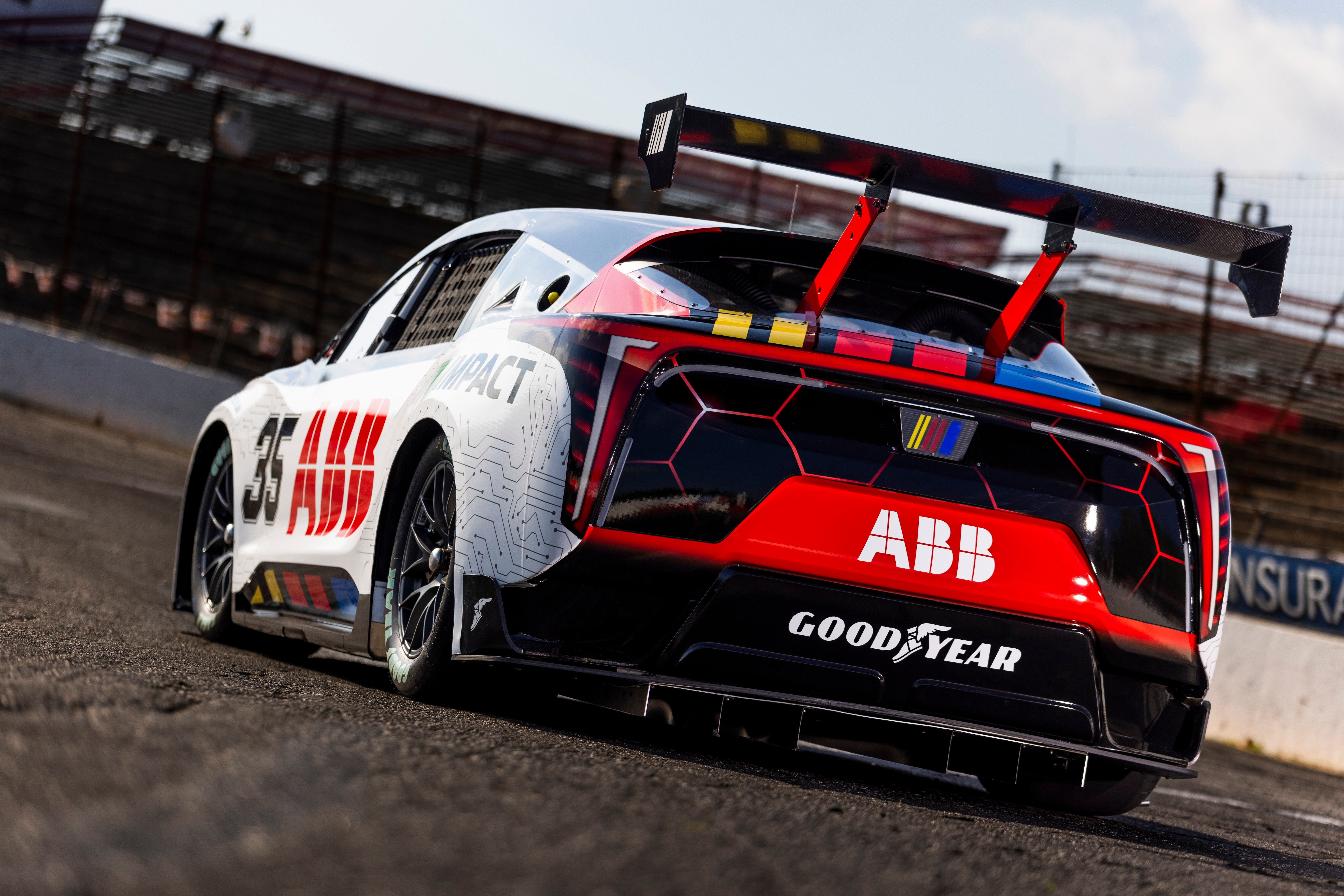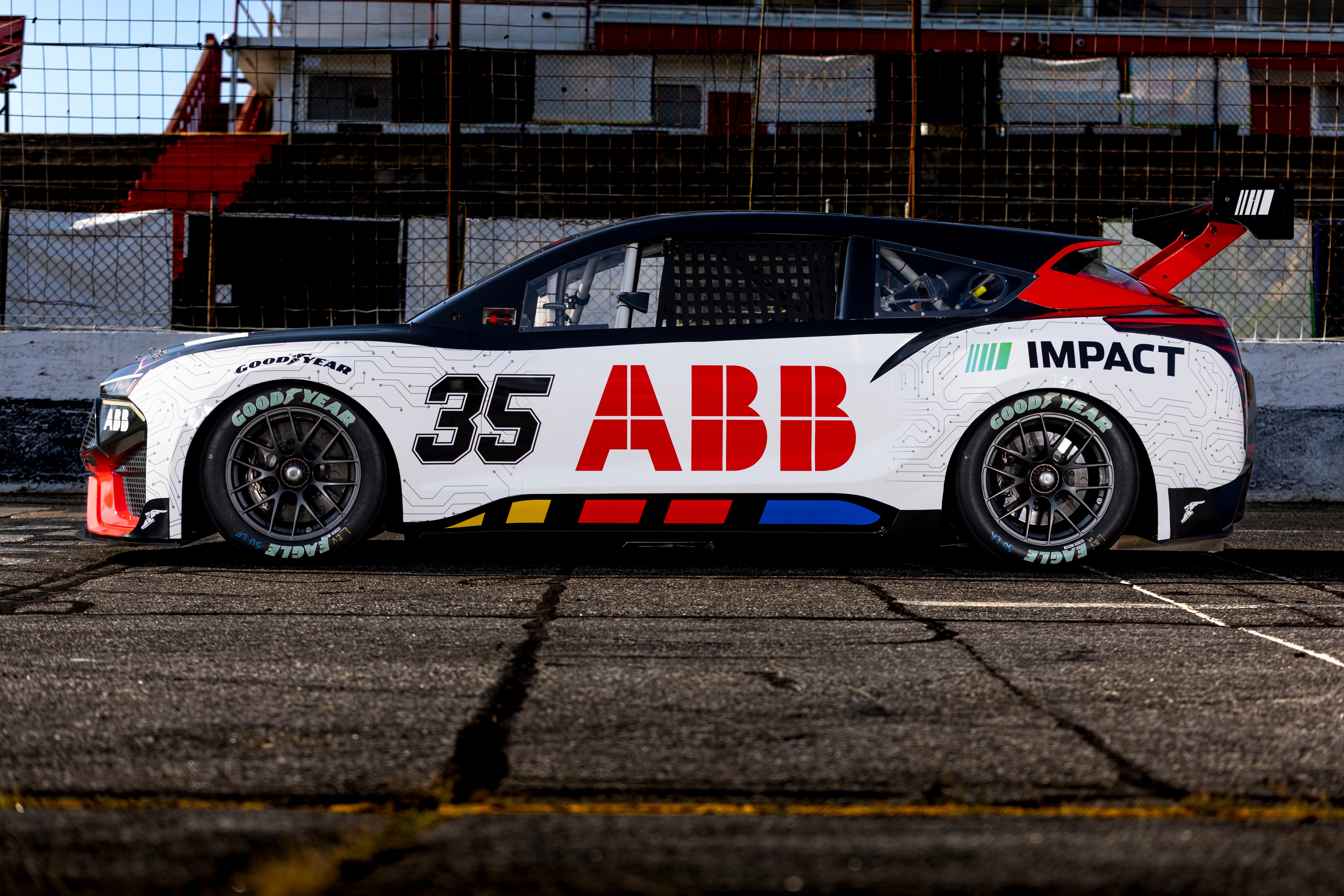
NASCAR formally unveiled a prototype electric race car on Saturday in Downtown Chicago that may prove to be more symbolic than an actual competition direction for its future.
The unveiling was part of a partnership announcement with electrification and automation company ABB as an expansion of the NASCAR IMPACT initiative that aims to reduce its carbon footprint over the next decade. Specifically, NASCAR has set a goal of reaching net zero operating emission by the 2035 season.
The $1.5 million ABB NASCAR EV Prototype was developed in collaboration with Chevrolet, Ford and Toyota and is an electrified compact car that produce 1,000 kW of peak power, the equivalent of 1341 horsepower. Within the same chassis as the current generation Cup Series car is a 78-kWh liquid-cooled battery and three STARD UHP 6-Phase motors.
It has a tall and wide rear spoiler to generate the downforce required to handle the power.

Like most hybrid or full electric vehicles, the prototype has a regenerative braking system that converts kinetic energy from braking into electrical power. Even though NASCAR’s current manufacturer competitors collaborated with the development of the car, they haven’t developed a proprietary racing powerplant for it.
This is the further evolved form of the car that Cup Series veteran David Ragan has tested at Zmax Raceway and Martinsville Speedway over the past year and was intended for a demonstration run in February prior to The Clash at the Los Angeles Memorial Coliseum.
That demonstration run was rained out but Ragan said later that the car was powerful and difficult to drive in all the ways a race car should be.
“I’m sure it can go 200 mph,” Ragan said. “I will tell you that the acceleration coming off the corner at Martinsville, when the torque and the power’s turned up, I’ve never felt acceleration like that in my life. That’s the fastest I’ve ever accelerated because of the all-wheel drive and the torque.”
NASCAR has been non-committal to forming a racing series around the platform mostly because it isn’t sure where the future of the automotive industry will lead them. While the past decade inched closer towards electrification, it seems just as likely that the next decade will be about retaining internal combustion but with alternative fuels..
“I wouldn’t sit here today and say we’ll never do a series,” said league EVP and chief racing development officer John Probst. “I’m just saying that right now. I don’t want to create the expectation that the series is going to be announced for next year. That’s not the case. We’re not saying no to it either.
“But I just think it’s an opportunity for us to do something that is meaningful in the sense that we’re developing new technology for our car [and then] judge the feedback from our fans. At the end of the day, that’s all we measure ourselves by ultimately. We want to be relevant to the OEMs but if we’re relevant to them, and no one watches, they’re going to look at us and go, ‘Why are we messing around over there.’”
Instead, the car is more of a symbol of the NASCAR industry’s commitment to a cleaner footprint and future.
NASCAR IMPACT is an umbrella department within the sanctioning body to ‘shepherd sustainability, community engagement, and other social initiatives.’
“We want to use this car to demonstrate that,” Probst added. “It’s also to educate ourselves and there is no better way to educate ourselves than with a partner like ABB and work with our existing partners and surround ourselves with the best people in the world to be ready for the future, whatever that holds.”

NASCAR president Steve Phelps has also repeatedly said that sound is an important sensory part of experiencing the sport.
“Sound is a huge part of who we are as a sport,” Phelps said then. “It’s going to continue to be.”
NASCAR’s vice president of vehicle design Brandon Thomas echoed that sentiment too.
“A lot of our partners are more and more looking at hydrogen-based solutions,” Thomas said. “Certainly, for us, the sound of the engines when you throw the green flag … if you love this stuff, you think about it, and you get goosebumps when our cars come to life when they throw the green flag. It’s very appealing to keep that.”
Again, this is all part of a broader sustainability initiative. By 2028, NASCAR intends to introduce sustainable racing fuel and recycling and all events with 100 percent renewable energy at all 15 of its facilities before reaching net zero emissions by 2035.
That’s why the car is numbered No. 35 alongside ABB decals. T he body is made from plant based materials,a flax-based composite developed by Swiss company Bcomp as opposed to the carbon fiber material current Cup cars are made from now.
Matt Weaver is a Motorsports Insider for Sportsnaut. Follow him on Twitter.
